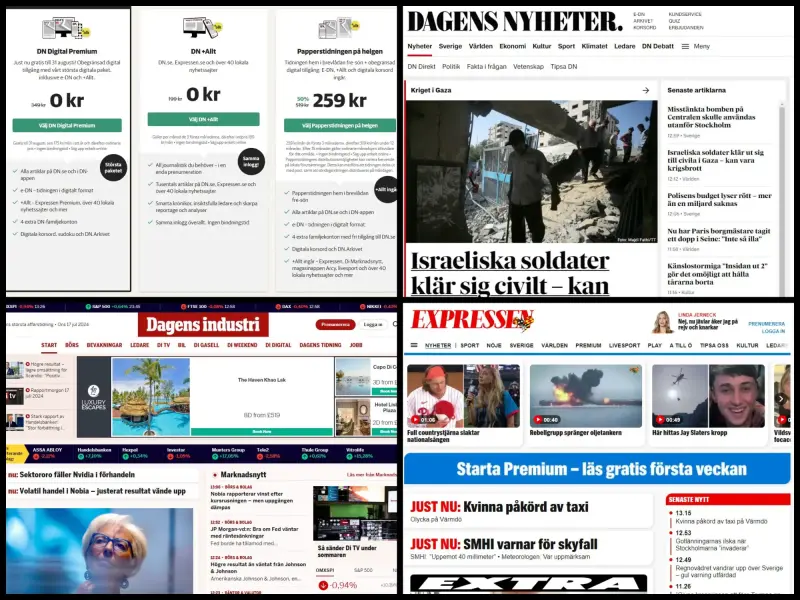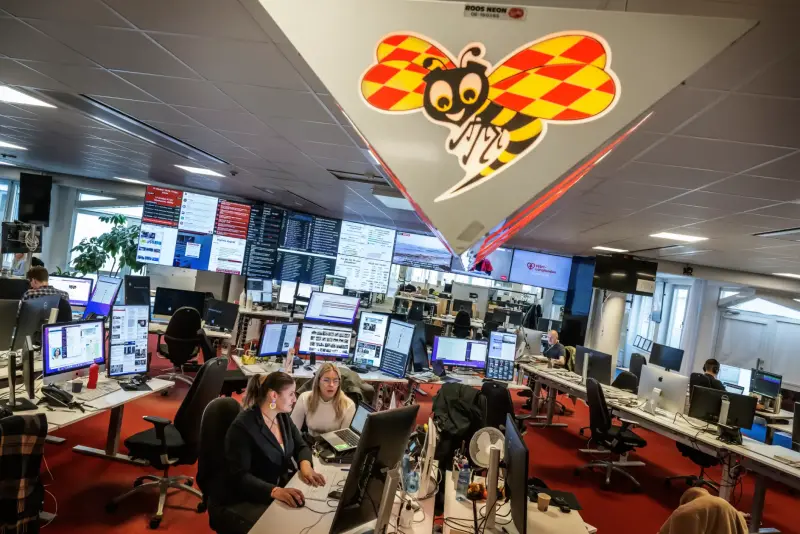
Sweden’s biggest news publisher Bonnier News is offering readers personalised bundles of content from across its group of titles in order to boost subscriptions.
Bonnier News owns more than 50% of the Swedish newspaper market including three national titles in the broadsheet Dagens Nyheter, tabloid Expressen and business title Dagens Industri as well as 47 local newspapers, 20 glossy magazines and about 15 B2B brands.
It operates in 12 other countries, mostly daily business newspapers, and last year invested in Ireland’s Business Post Group.
Following a period of acquisitions and subscriptions growth Bonnier News has more than doubled revenue from SEK4.5bn to SEK11bn since 2016 (making it equal to about £770m today) and gone from being above 90% print to 51% digital and other growth areas like B2B data and events.
The consumer side of the business makes up about 70-75% of revenue while business media accounts for the rest.
Profit (EBITDA) has more than tripled to SEK0.9bn (around £65m) in the same period.
Its subscriber total has gone from about 500,000, of which 450,000 were just print, to 2.6 million of whom 2 million are digital.
Bonnier News chief executive Anders Eriksson told Press Gazette's Future of Media Explained podcast the publisher's opportunity for growth is now to use the potential of generative AI to produce better personalisation for subscribers.
He explained that "mostly you get the same experience regardless of your age or consumption patterns or when you last visited, used the site, regardless if it was five minutes ago or five weeks ago, or something in between, and regardless of what you have read before and your interests".
He backed providing "broad coverage" and certain general news for everyone to help avoid echo chambers but said there is an opportunity to give people more coverage areas than they would get under traditional siloed subscriptions.
Last year Bonnier News launched its consumer bundle +Allt [all], which combines all of its digital consumer content in Sweden into one package including national and local news and magazine content.

He told the WAN-IFRA World News Media Congress at the end of May that Allt had more than 270,000 subscribers as well as an additional half a million from adding it to the package of some print subscribers.
Eriksson told Press Gazette: "It's addressing the issue that, currently, the news articles that we produce are not optimised at all... so we're not reaching everyone who really would like to read that content..."
He added that most people "don't want to spend too much time sort of looking for stuff, you would like it to come to you".
A practical example of the benefits of combining news titles in one bundle, he said, is that someone may have family or a summer house in a different part of Sweden (more than 20% of Swedes reportedly own a summer cottage or cabin) which means they are interested in some news from that area but not enough to subscribe to the local newspaper.
The bundle pricing is currently a deliberately "low hurdle" - a rise compared to a standard digital newspaper subscription from approximately SEK 150 (£11) to SEK200 £15 per month.
But Eriksson said he believes there is potential to raise the price further "without losing customer retention" once the experience is more personalised and is delivering more value.
For now, though, it remains "sort of clunky to actually consume the content because you have to go into all different sites and it's not so customised or personalised properly.
"We're starting to do some experiments and do some things and we have some AI-generated personalised news flow products and things like that that we're experimenting with, but it's early days."
The other prong of the current approach is to target both households and companies with subscriptions but allow each person to register and personalise their own content and how they consume it, whether it's the paper, website, app or podcasts, for example, or a combination.
Eriksson said: "Our ultimate goal is to get as many as possible of the households and companies in the Swedish market - and other markets where we are but focus on Sweden now - to subscribe, and then get as many users as possible in that household or in the company to register to that subscription... and then engage as much as possible and get as much value out of that subscription and that relationship in a personalised way... I think we need to find solutions that are suitable for everyone."

Bonnier News is playing the long game with this strategy to build relationships with younger users. Eriksson explained: "I think this strategy is also a way to get young people on board because if we can get the households to get all users to register and create a relationship, then - I don't think we will get 20 year olds a lot to subscribe and pay for a subscription or even more so obviously an 18 year old or a 17 year old, so our thinking is that we would like them to engage and use our content and like it and have access through their household and the parents and then they can keep using that even when they move away from home but at the point when they form their own household, maybe in their 30s, that's when we would like them to become a subscriber."
Encouraging households and companies to use the new subscription and improving the personalisation and user experience will be "key in the coming couple of years", Eriksson said.
"It's a big task to move all these titles, all these businesses, all these users, all the subscribers... it's not enough just to launch a product, it's also getting them to use it and experience it and like it, and so I think the coming couple of years will be very focused on all those activities."
Otherwise, he said, they are "hoping to continue to grow revenue although, I mean, since we have a print component declining, we're not organically seeing rapid growth, but some growth, and continue to improve profitability through scaling the business and digitalise and automate the business."
Eriksson also shared lessons on implementing widespread culture change after finding Bonnier's media brands worked in a very siloed way when he arrived. A big part of the transformation, he said, was going from a "decentralised organisation to much more integrated organisation" and creating the first joint management team for the whole business.
"In the beginning, it was fairly challenging, to be honest, because it was a highly political organisation between the different titles and the different newsrooms... very silo based, very sort of non transparent, and political," he said.
In the first joint meeeting there were people "sitting with their arms crossed" reluctant to reveal anything about their part of the business.
But Eriksson ploughed on, "moving fairly slowly, because I was concerned that if I tried to throw in a bomb things could get really ugly and out of control".
He also put four values in place: engagement, integrity, transparency and putting emphasis on making decisions around business results rather than anything political.
"And I also think that the culture of the news organisation is great in many ways, it's sort of fast paced, it's in high engagement, it's fantastic in many aspects, but it sometimes sort of tends to thrive on political and sort of, I think that's a general theme to some extent," he said.
Eriksson also shared his thoughts on why Sweden is so much further ahead in the subscriptions game compared to many countries - but especially the UK.
In the latest Reuters Institute Digital News Report, 31% of respondents in Sweden said they had paid for digital news subscriptions in the previous year - second only to fellow Scandanavian country Norway on 40%.
The average was 17% and the UK was last in a table of 20 countries on 8%.
Eriksson said media companies in the Nordics put an early focus on digital subscriptions and have a "subscription heritage and relationships from print to a greater extent than in the UK".
"That's one reason, but it's also about creating that long term, trustworthy relationship with the customer, which also the content is part of, and the journalist is part of that as well."
Email pged@pressgazette.co.uk to point out mistakes, provide story tips or send in a letter for publication on our "Letters Page" blog
